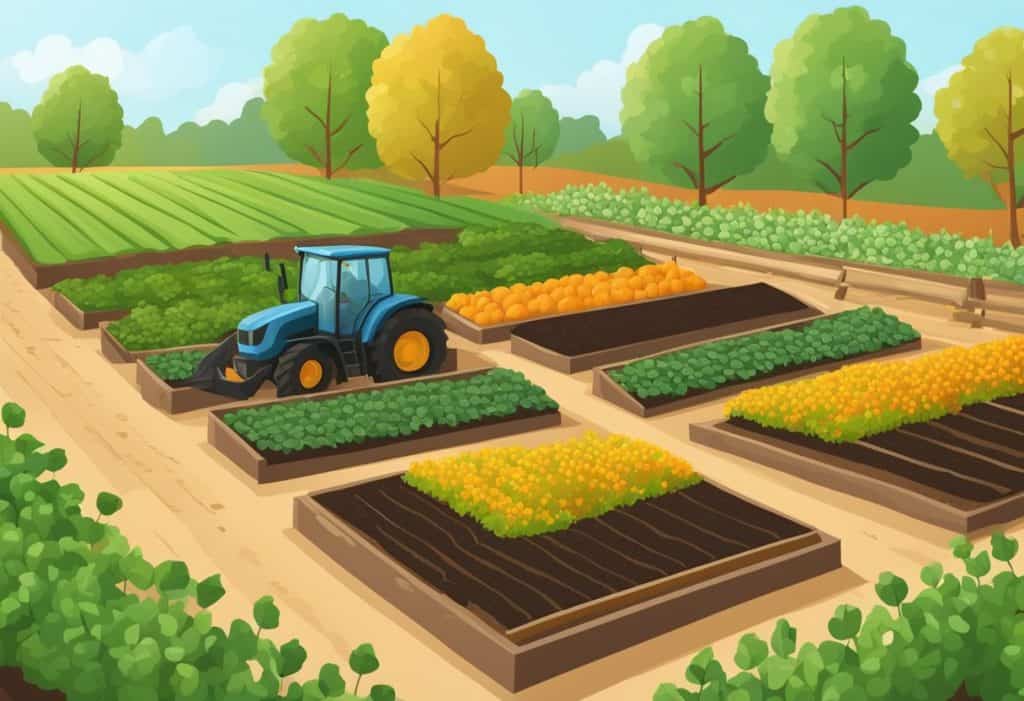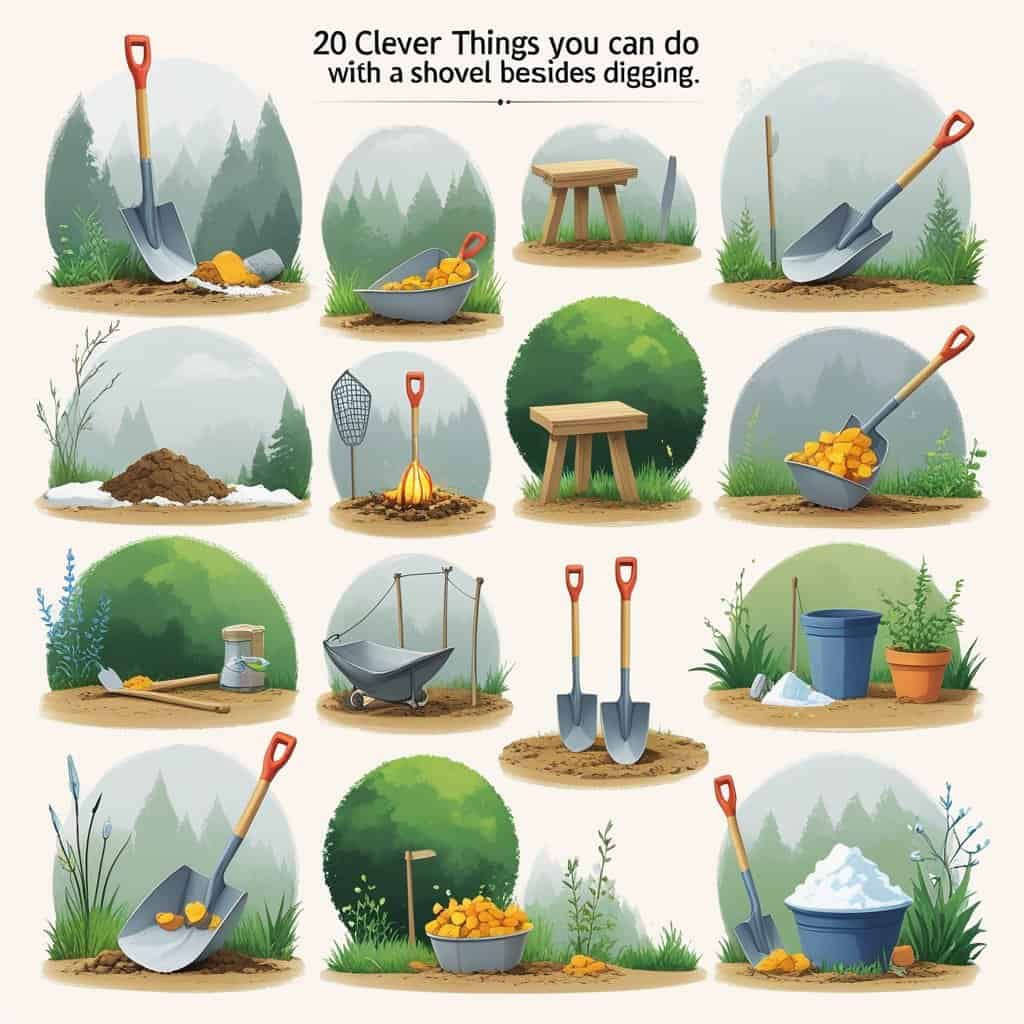The shovel, an instrument as old as agriculture itself, has proven to be an essential yet unassuming cornerstone of sustainable agriculture. Sustainable farming practices have increasingly become vital as we strive to produce food in ways that are kinder to the environment and more aligned with ecological principles. At the core of these practices lies many tools and techniques that are often overlooked for their simplicity and historical use.
Innovation in shovel design and materials has paralleled the evolution of sustainable farming methods. Shovels are integral in conservation agriculture, where they disturb the soil minimally and support water conservation strategies. They remain indispensable tools for organic farmers who rely on manual techniques for crop management.

Table of Contents
Design Of Shovels In Sustainable Farming Practices
Advancements in shovel design help reduce the carbon footprint and enhance the efficiency of farming operations. Ergonomic handles have become a crucial design feature in modern shovels. They include non-slip features to ensure a secure grip in various weather conditions. They are shaped to fit the natural grip of a user’s hand, reducing fatigue and are often adjustable in length to suit different user heights. Handles are crafted from bamboo or other fast growing, sustainable woods, shovelheads are increasingly made from recycled metals, and bioplastics for components like grip enhance decomposition once the shovel’s life cycle ends. By prioritizing these materials, we do our part to preserve the environment and instill sustainable values within the farming community.
In organic farming, shovels are a fundamental tool for sustainable practices. Shovel are incorporated in organic farming techniques to maintain the soil structure and promote a healthy ecosystem below the ground. By using shovels, we can reduce compaction and limit the disturbance to the soil’s layers, which is essential for the following reasons:
- Aeration: Enhances oxygen availability to plant roots and beneficial soil organisms.
- Water infiltration: Improves the soil’s ability to absorb and retain moisture.
Shovels allow us to be precise in our approach, carving out specific areas for planting rather than overturning large sections of earth. This helps preserve the soil’s integrity, fostering an environment where microorganisms can thrive and support plant growth.

Composting & Shovels In Sustainable Farming Practices
In composting efforts, shovels play a pivotal role. The shovel is an indispensable tool for creating and applying compost. It ensures that organic waste is recycled efficiently, returning valuable nutrients to the soil and closing the loop of our sustainable farming cycle. We use them to:
- Mix compost materials: Ensuring a uniform composition that decomposes evenly.
- Aerate the compost pile: Introducing oxygen to accelerate the composting process.
- Turning the compost pile: Rotate and mix to promote decomposition
- Transporting compost: Move nutrient-rich material to desired areas
- Integrating compost into the topsoil to enhance fertility

Conservation Agriculture and Shovels In Sustainable Farming
In conservation agriculture, shovels are pivotal in minimizing soil disturbance and maintaining soil health. We use these tools to support sustainable practices such as no-till farming and cover cropping.
In no-till farming, we use shovels for precise soil work, avoiding the extensive disruption familiar with mechanical plowing. A shovel helps us:
- Create Small Pits or Furrows: We create narrow furrows that minimize soil exposure and preserve the soil structure for seeding.
- Weed Management: We strategically remove weeds around crop plants with minimal soil disturbance, maintaining soil health.
Shovels are instrumental in cover crop management and mulching, critical for soil moisture conservation and nutrient recycling. Our practices include:
- Incorporation of Organic Matter: Gently turning over cover crops or organic material with shovels helps us enhance soil fertility without heavy machinery.
- Spreading Mulch: We efficiently distribute mulch around plants, using shovels to ensure an even layer that conserves water and suppresses weeds.

Water Conservation Strategies
We use shovels to prepare beds and implement water conservation techniques in sustainable farming. Proper use can lead to effective water management and preservation of this critical resource.
We employ shovels to create irrigation canals and basins that help conserve water. Micro-basin Irrigation involves digging small pits around the plant base to catch and hold water, reducing runoff.
- Zai Pits: Small pits filled with organic matter catch rainwater and concentrate nutrients.
- Furrow Irrigation: Shovels dig furrows alongside crops, minimizing water waste compared to overhead sprinkling.
Shovels are instrumental in shaping landscapes for rainwater harvesting. By crafting swales – shallow ditches on contour lines – we capture rainwater, encouraging infiltration and reducing evaporation.
- Swale Construction: Shovels assist in carving out these earthworks to direct and store water.
- Rain Gardens: A shovel-excavated depression that allows rainwater from impervious areas to be absorbed.

Economic Impact of Shovels In Sustainable Farming Practices
Shovels have long constituted an essential component of agricultural toolkits, providing a cost-effective option for soil management and significantly influencing the economics of farming operations.
We recognize shovels as a fundamental and economical choice for various farming tasks. Their affordability makes them accessible for small-scale farmers and gardeners alike. Here’s a comparison of tool costs:
- Shovel: $15 – $60
- Mechanized Tiller: $200 – $1500+
- Tractor attachment: $1000 – $10000+
Farmers avoid the steep prices of mechanized equipment by using a shovel. This conservative capital outlay allows funds to be allocated elsewhere, such as purchasing quality seeds or investing in soil amendments.
We value the durability of shovels, with proper care extending their utility for years. Shovel maintenance involves straightforward steps:
- Cleaning: After use, remove soil and debris.
- Sharpening: Periodically sharpen the edge for efficient digging.
- Storage: Keep in a dry environment to prevent rusting.
These simple practices ensure that shovels remain functional over long periods, contrasting with the recurring costs and more complex maintenance that mechanized tools demand.

The Shovels’ Role in Future Sustainable Farming Practices
We are witnessing significant improvements in shovel materials and ergonomics. The emergence of lightweight composite materials and recycled metals makes shovels easier to use and more environmentally friendly. Manufacturers prioritize durability and efficiency, ensuring the tools last longer and reduce waste. Moreover, the integration of innovative technology is on the horizon, with sensor-equipped shovels potentially providing real-time soil data to farmers.
Our sustainable farming practices are poised to benefit from the strategic use of shovels. Shovels are instrumental in minimal-disturbance farming methods such as no-till agriculture, which preserves soil structure, conserves water, and maintains organic matter levels. Shovels designed for precision agriculture will support careful soil management, thus promoting healthy crop growth while minimizing the environmental footprint.

Final Thoughts
Shovels are foundational to implementing sustainable farming techniques. With design improvements that enhance shovel efficiency and support environmental conservation the role of the shovel in sustainable farming practices will be ever present. With education and future innovation the shovel will always play a role in agriculture.
Frequently Asked Questions
How does shovel design impact sustainable agricultural methods?
The shovel design affects soil aeration, ease of use, and the capacity to minimize soil disruption. Ergonomic designs contribute to more efficient soil work with less physical strain.
In what ways can manual shovelling promote soil health compared to mechanized tilling?
Manual shovelling allows for selective soil turnover, preserving soil structure and microbiota, often disrupted by mechanized tilling. It facilitates targeted aeration and avoids the compaction associated with heavy machinery.
What are the best practices for incorporating shovels into organic farming techniques?
We recommend using sharpened, well-designed shovels for precise work, rotating crops, and implementing cover cropping to maintain soil health. Moreover, shovels support the delicate integration of organic matter without harming beneficial organisms.






